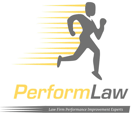Our previous articles about law firm practice management software discussed the most popular features and benefits seen in today’s applications and why law firms should embrace cloud-based software.
Part 1: Manage a More Competitive Firm With the Right Software
Part 2: 7 Reasons Why Cloud-Based Solutions are Right for Your Firm
In this final installment, we will outline the ways your firm can successfully implement practice management software.
Before your firm takes the first step in implementing new technology, you needs to understand the magnitude of such an initiative. Every firm operates differently so, unfortunately, there isn’t a “one size fits all solution”. The process of changing software isn't easy, and it won’t be quick. But it is necessary to compete with other firms in today's market. And if it’s done right, your firm will be more efficient, profitable and client-focused.
Preparing for a change in software is imperative. The steps highlighted in the content and infographic below are essential to a successful transition to a new practice management software.
Created by PerformLaw
1. Asses Firm's Current IT. Set goals.
Before your firm can move forward with the initiative, it is essential to understand what the firm currently has in place. What is working well for attorneys and staff members? What is taking too much time? What is missing?
Equally important is getting an accurate understanding of the firm’s current IT infrastructure. Is the firm capable of handling updated software in terms of hardware, licensing, storage, workforce and technical expertise? Cloud-based software companies employ entire teams of experts to focus on the maintenance and ongoing development of their services and security. This is incredibly beneficial to most small and midsized law firms who typically cannot afford the needed IT staff to carry out these same stringent security measures.
2. Build Project Team
Putting together the right project team will be the engine to push the new software implementation project forward. Ideally, the team will include respected partners with some decision-making authority, attorneys with tech and business sense, and staff members using the new software the most. Designate a project manager who is responsible for making sure the essential tasks are completed. The firm may want to consider hiring an outside advisor to lead the efforts.
3. Vet Software Choices
Besides doing online research about the available software, communicate with peers at other law firms to find out what’s working for them. Read reviews on outside websites and ask software vendors for references to obtain first-hand accounts of other law firm’s experiences with a particular software system.
The project team should develop selection criteria based on the firm’s needs and requirements to narrow down the available solutions. Possible criteria may include
- vendor support and commitment to ongoing development,
- security protocols,
- migration and training support,
- Costs (short term and long term).
In making the final selection, firms should ask vendors a lot of questions. Can the applications that your firm relies on now be easily integrated with the software? Consider using a trial version of various solutions before making a final decision. Ask the software company to walk the firm through an actual workflow. Does it do what you need it to do? Make sure you are extremely clear about what the software can and cannot accomplish.
Doing your due diligence now will ensure the pain of the process is worth it.
4. Implement New Software
Your firm will have multiple sources of data to move to the new system, ranging from contact information to case files to time and billing data. And just like moving to a new house, you don’t want to bring any junk that will only clutter up the new space. Before migrating to the new software, take the time to eliminate duplicate files and inactive accounts. Data quality is paramount.
For the actual migration of the new software, the firm needs to be clear on who will manage the migration - the software company, the firm’s technology person/s or an outside expert? It is also important to schedule the migration when it will cause the least disruption to the firm, possibly at the end of a billing cycle.
5. Train, Train, Train
From administrators to partners to associates and staff members, everyone at the firm needs to understand the new software and how it will run in the firm. Training should be somewhat personalized since everyone will be using the software for different purposes.
The firm should designate “champions” staff members who are well-trained and supportive of the new software to serve as experts to others during the implementation and after.
And learning about the new software is not a one-shot deal. The process is ongoing as the firm encounters new pain points and software updates. Allowing the software to evolve to meet the firm's needs will bring the firm the most benefits.
6. Measure Success. Keep Building.
Measure data specific to goals your firm established in Step 1 to measure the success the software is able to report. Report any an all successes, especially in the early months after implementation, to grow support of the software. As you work out the kinks and find how to best utilize the software, identify new processes for repetition and quality control. Keep learning about the software to maximize its benefits.
 Keys to Success
Keys to Success
We suggest that law firm managers, who are dealing with the constraints of outdated technology or have trouble dealing with multiple unintegrated applications, to take a closer look at programs like ZolaSuite, Centerbase or CosmoLex. Firms that embrace this technology and implement it properly tend to see returns in the form of streamlined operations, increased productivity and reduced long-term IT costs.
People, Processes, Tools
Successful software implementation requires the firm's commitment to change. Since change affects all parts of an firm, it will specially affect a firm's people, processes and tools. (for more information on this topic, please check out our article Law Firm Leadership and Change Management ). Firm leaders need to consider how these 3 components (people, processes, tools) will be affected by the implementation of new technology to prevent any negative outcomes and possible failure of the initiative.
The Processes and Tools component can be managed with preparation and by diligently following the steps listed above. The firm should not rush through the process or expect too much from the software or people using it right away. Prepare for staff workload to decrease as they adjust to the new system. Accept and support this as much as possible.
The People component is most critical. As capable as these software applications are, their benefits will be minimal if the employees don't use the technology properly. Focusing on communication and training from the start of this initiative will make sure that everyone understands what is happening at all points of the project.
If you are contemplating whether or not your technology system needs an upgrade, we can help you evaluate your applications, vendors, and costs. We can help you pick the systems and people you need at a cost that works.
.webp?width=124&height=108&name=PerformLaw_Logo_Experts3%20(1).webp)

